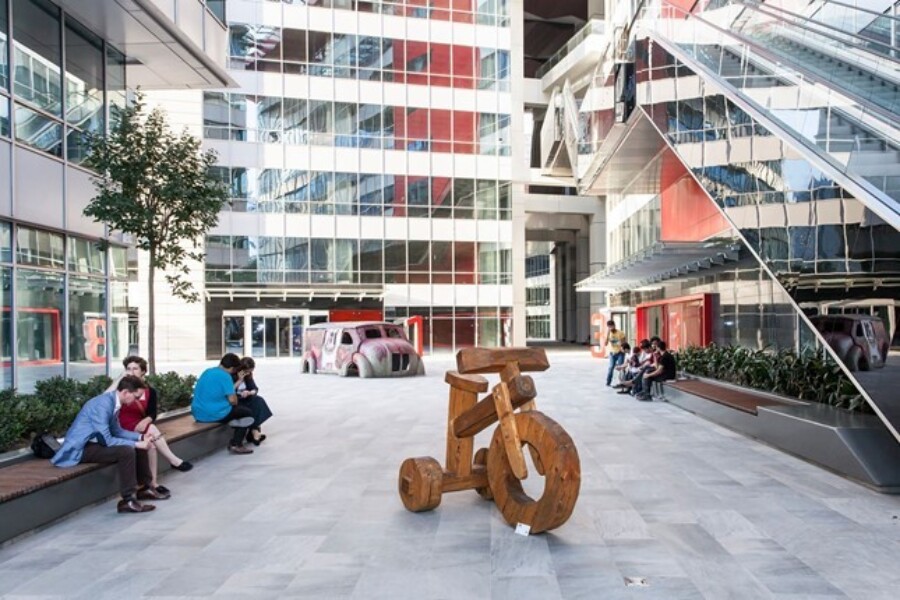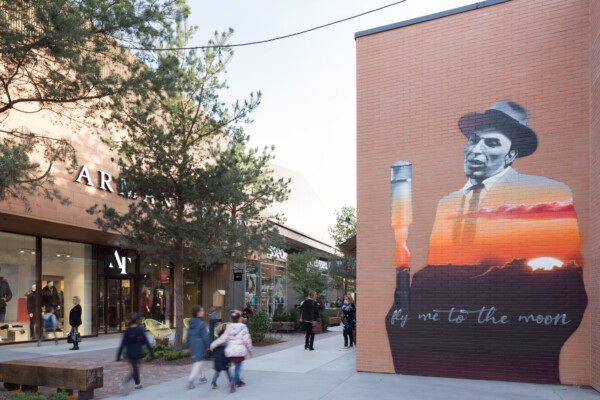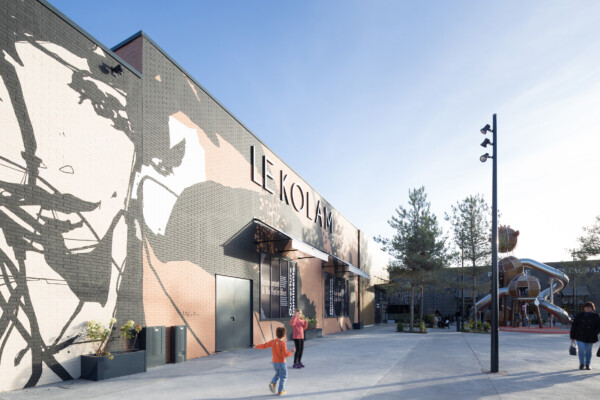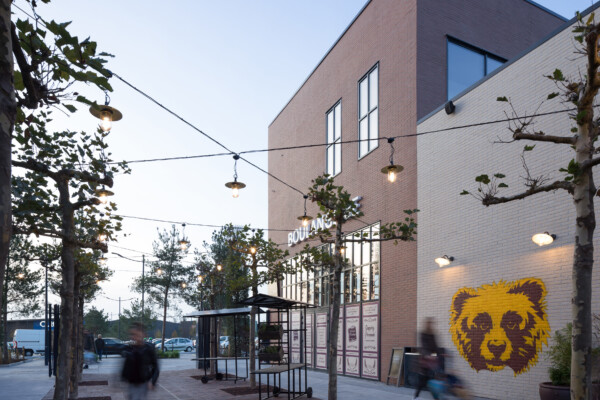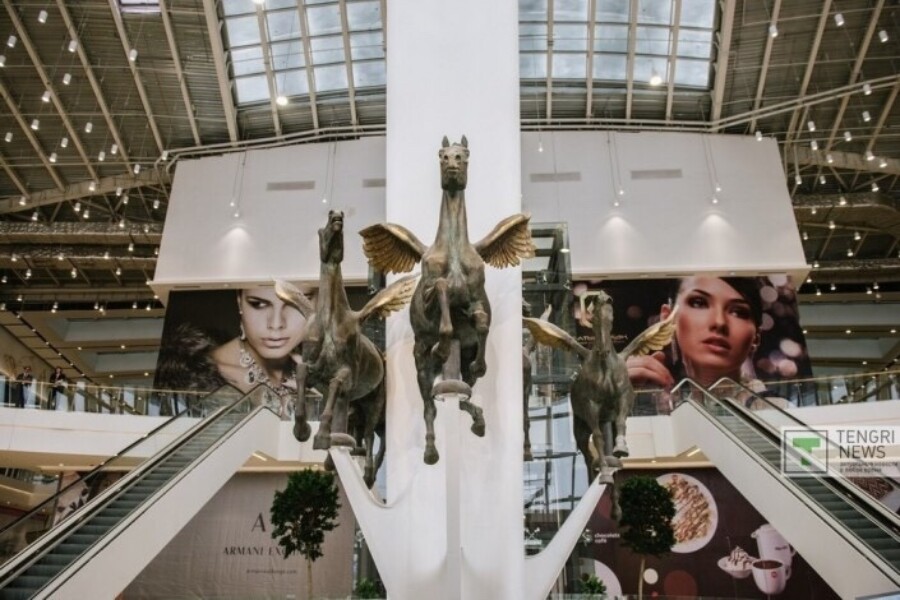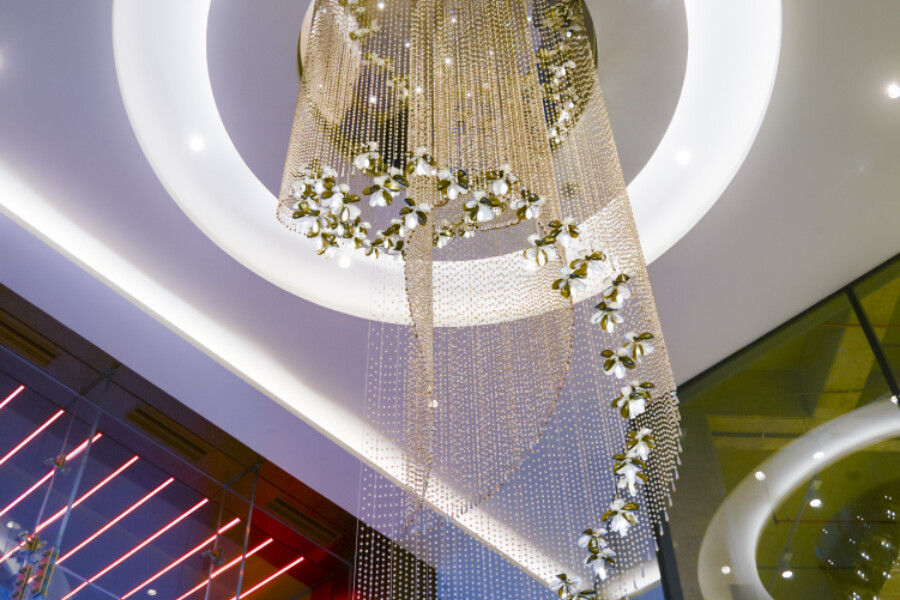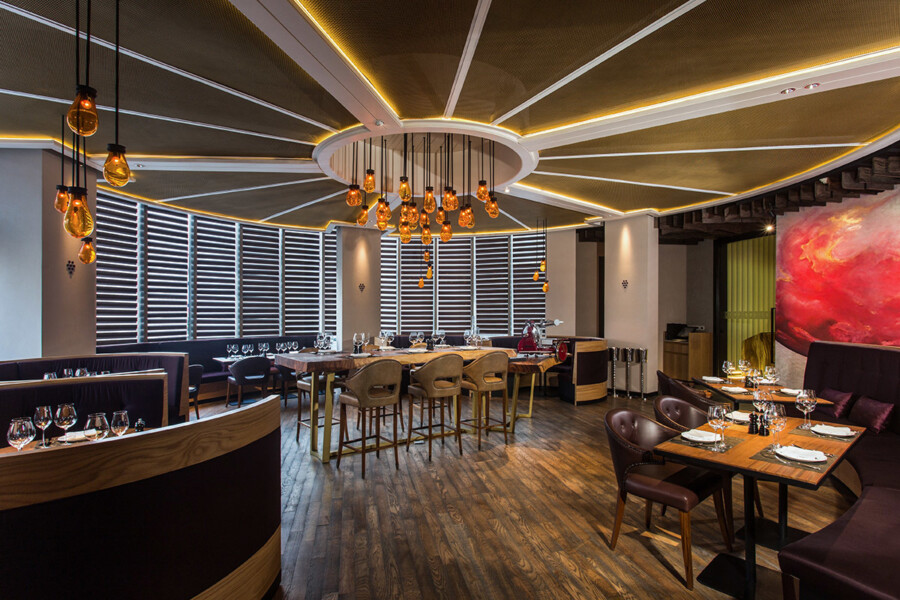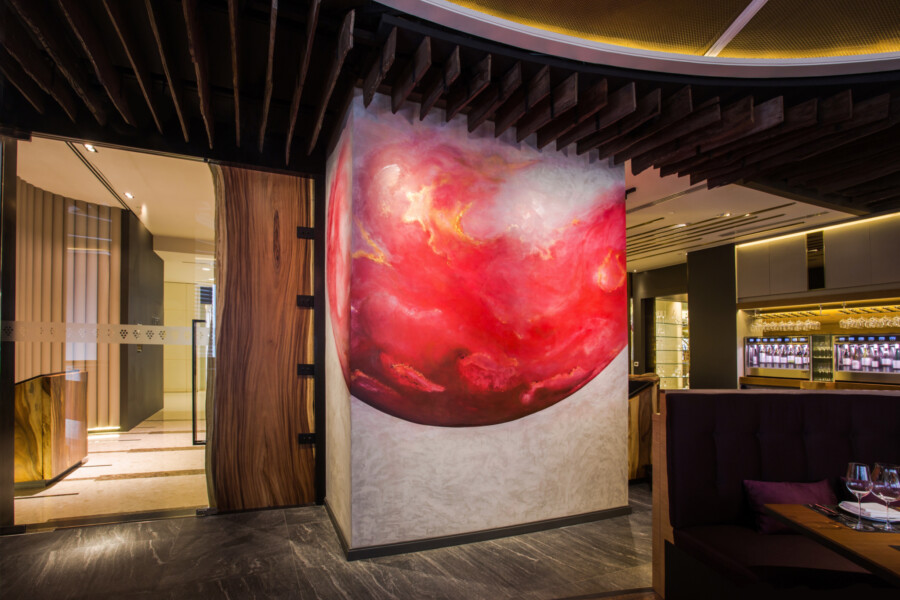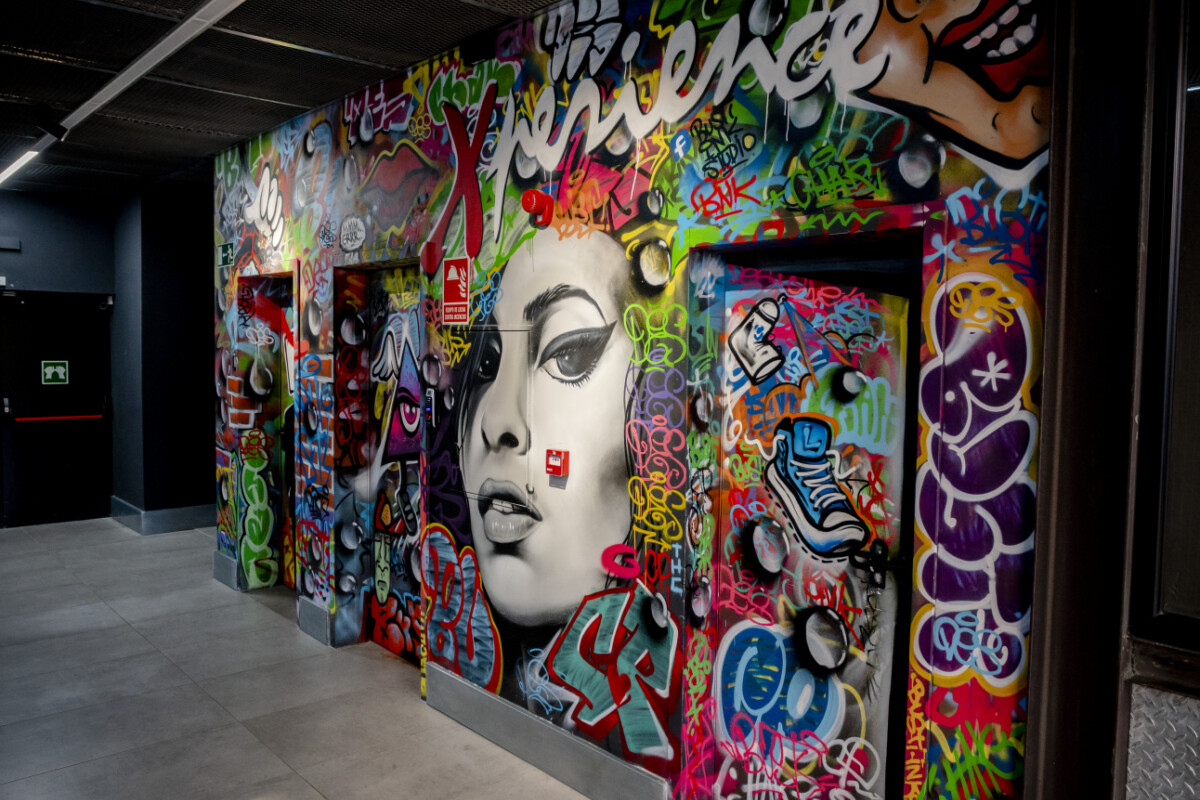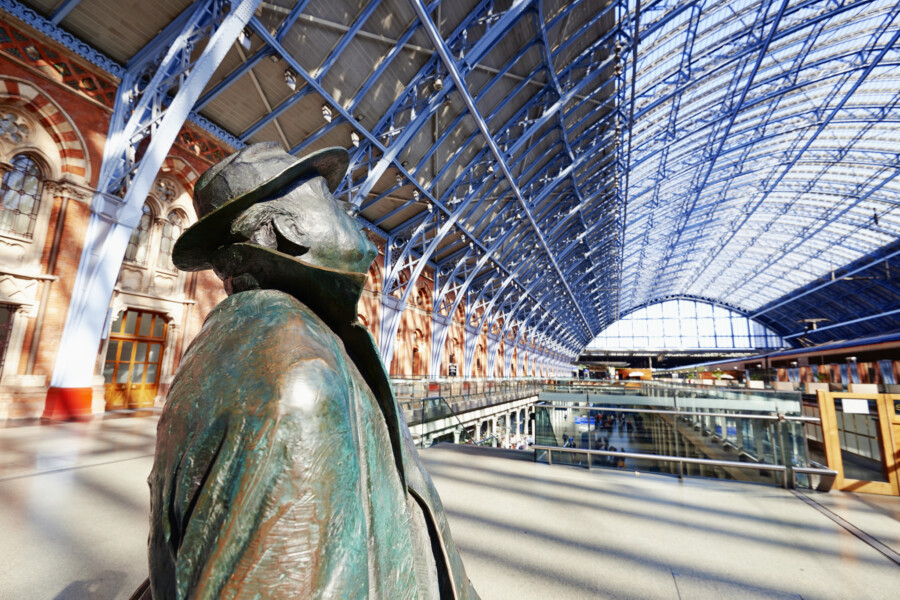
Art and Architecture
The relationship between art and architecture is one that has fascinated designers and artist for centuries. The balance can be hard to get right, and the process can be a challenging one for all but the most gifted visionaries. In this piece, Jan Dijkema discusses the challenges involved in creating a successful fusion of the two which satisfies the designer, the artist, the client and the viewer.
Art-chitecture
There has been debate for decades about whether architecture is art – with some passionately arguing that architecture is a form of self-expression and therefore an art form, and others decrying the notion, viewing it as a form of egotism which leads to ‘starchitect’ designs being parachuted into place without reference to social and geographic context or appropriateness.
If architecture is not art, and there’s a good argument to the contrary when one considers striking buildings such as the Baku Entertainment Centre in Azerbaijan or NOI Techpark in Bolzano, Italy, there is certainly a place for art within the architectural form. For thousands of years, buildings and spaces have been transformed by the way in which art was used within them – often resulting in a fusion which created spaces which were beautiful, awe-inspiring, spiritually uplifting, intimidating, or just plain flashy, depending on the intentions of the client and the architect.
The fusion of art and architecture can transcend the sum of its parts, but can also go incredibly wrong. Getting the balance right is, it can be argued, an art form in itself. The building designer has to have the skill and creative talent to envisage what the end result will be and how it will be interpreted by the people who see it.
Lessons learned from experience
Having worked on several projects where the incorporation of art was a key design feature, I and my colleagues at Chapman Taylor have experience and insight into what makes a successful blend. The 42 Maslak mixed-use development in Istanbul, for example, has made the incorporation of artworks within the architecture a signature feature of the scheme, which is themed as ‘Artful Living’.
Art was integral from the outset with 42 Maslak, and that meant that we, as architects, designed with that in mind. The ‘Artful Living’ concept from developer Bay Insaat was based on the notion of art as an essential component of society, and this theme was incorporated from conception to completion. There is an art gallery included, and even the construction vehicles were individually painted, becoming working pieces of art. It has culminated in a revolutionary project where people eat, sleep, live and socialise within a creative environment they can call their own.
Art needs an appropriate built environment within which it can be showcased to greatest effect, while architecture needs art to turn bricks, steel and concrete into a space in which people want to live, to learn, to shop and to work.
Integrating art with architecture can help crown a successful scheme, as we found at the Mall of Qatar project in Doha. Art is important in Qatar, with the government and the royal family supporting it as an essential part of the country’s branding. It regards sculpture, painting, media art, film-making and, of course, architecture as being of the highest cultural importance, and, among its neighbours, Qatar is considered to be setting a benchmark for its selective art collections and for its architecture and urban design. There was a need for the Mall of Qatar to host an outstanding façade towards the new metro station on the site which would lure Qatar Rail passengers during the day and at night. The ‘jewelled façade’ we created works both as a commercially attractive feature and as a symbolic, artistic element. It gives the whole project a memorable leitmotif.
These projects illustrate how, for architects, it can be both a challenge and a pleasure to work alongside a client who wants to adopt an artistic approach to a project. An interested client can make all the difference in turning a good building design into a spectacular destination. The creative process is much more dynamic when clients, architects and artists are enthused about the end result, particularly in terms of how art might best transform architecture. The collaboration can be both tense and intense, but the end result is all the more rewarding when the process works well.
Chapman Taylor’s Mega Silk Way scheme in Kazakhstan is another project which showcases art within the building. Leading sculptors created installations symbolising the Great Silk Road, the ancient network of trade routes. Unique sculptures weighing over 100kg are suspended from great heights, depicting travellers and trades from past to present. These art works reflect the historical and cultural context within which the project lies, and illustrate the importance of deep thought and sensitivity towards the way in which art can be received by the viewer.
Azerbaijan’s Ganjlik Mall features spectacular handmade crystal chandeliers from Czech artist Maria Hostinova, whose elegant work graces the double-height entry spaces and offers a talking point for visitors. A similar effect can be seen with the striking sculptures commissioned for Trinity Leeds in the UK, or with the incorporation of public realm art into Princesshay and MediaCityUK, also in the UK. Well-placed pieces of art like this can utterly transform a space, turning the area into something perceived completely differently. The artwork can complete a space which had felt unfinished, or create a new meaning for it.
The award-winning Riedel Wine Bar & Cellar project in Bangkok has attracted much admiration for its use of artistic elements, such as bespoke lighting fixtures and ironworks, to create a series of different visual environments – making the enjoyment of wine a different experience in each. Clever thinking about how to use those features while maximising functional operation has resulted in a group of spaces which enhance the building.
How is the fusion best achieved?
The relationship between art and architecture might be one akin to those referenced in the famous song “Love and Marriage” – you can’t have one without the other. Art needs an appropriate built environment within which it can be showcased to greatest effect, while architecture needs art to turn bricks, steel and concrete into a space in which people want to live, to learn, to shop and to work.
The incorporation of art needs to be clever, however – it requires creativity and vision. Otherwise the viewer just gets the sense of art being shoehorned in as an afterthought, detracting from both the art and the architecture. In addition, it needs to be tastefully done, to avoid vulgarity or contextual misplacement.
Architects and artists need to have the experience and creative brilliance to know precisely how and where to blend art and architecture in a way which turns the synthesis of both into much more than the sum of its parts. Places and spaces can be both commercially successful and aesthetically pleasing, but it requires serious planning and good taste.
History shows that built environments can be made extraordinary by a well-judged use of beautiful and interesting art.
Digital artwork at Plaza Rio 2
Conclusion
Art and architecture can combine to create a visually stunning environment when the mix is thoughtfully considered. To achieve this, it is important that the context be taken into account, whether in terms of the individual space, the local geography, the culture, or what the client wants to express. It is also vital that the effect be one which doesn’t look cluttered or ‘blingy’, and which enhances rather than detracts from the surroundings. The fusion can be achieved effortlessly by designers and artists who are blessed with genius. For many of us, however, it is all about experience.
Perhaps, in the end, it is all subjective – after all, what appeals to one person might well leave the next person cold. However, countless examples throughout history show that built environments can be made extraordinary by a well-judged use of beautiful and interesting art, to popular acclaim. What is most important is that the resulting combination achieve something which, in the eyes of most people, makes a place somewhere they visually enjoy and remember for its aesthetic elegance. There is no more fitting legacy for the artist or for the architect.
